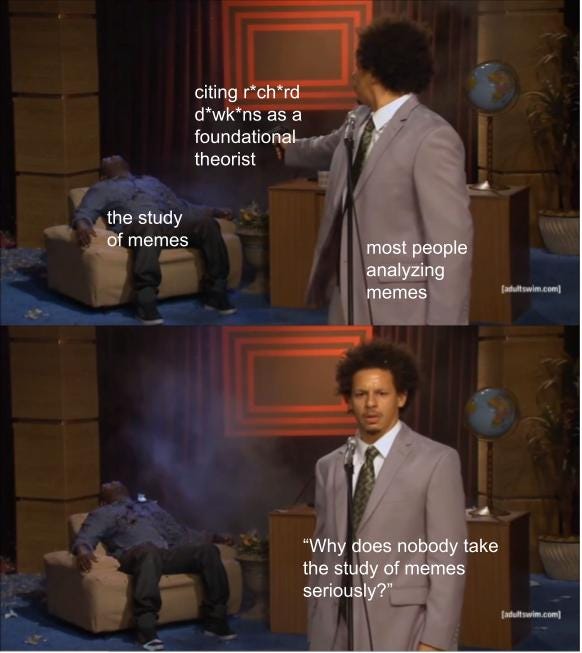What is a meme?
To answer that question, most people will quote Richard Dawkins, who writes in his book The Selfish Gene (1976) that a meme is “a basic unit of cultural transmission” and memes, like genes, mutate and become widespread in a population through a process of natural selection (Dawkins, 192).
Following Dawkins’ logic, human culture has chosen Doge the same way human biology has chosen ears, and a meme (like the gene for ears) succeeds because it is best adapted to its environment and out-competes other rival memes for our attention.
The idea is attractive—like many theories of everything, it feels nice to think it. But following this definition prevents us from actually understanding what memes are and what they can mean for us. It is like taking a photo of an elephant but only including its butt in the frame.
There are five ways in which I think Dawkins is wrong. The first is just historical, the next three more fundamental, and the fifth is just petty:
1) Dawkins wrote be…
Keep reading with a 7-day free trial
Subscribe to How To Do Things With Memes to keep reading this post and get 7 days of free access to the full post archives.



